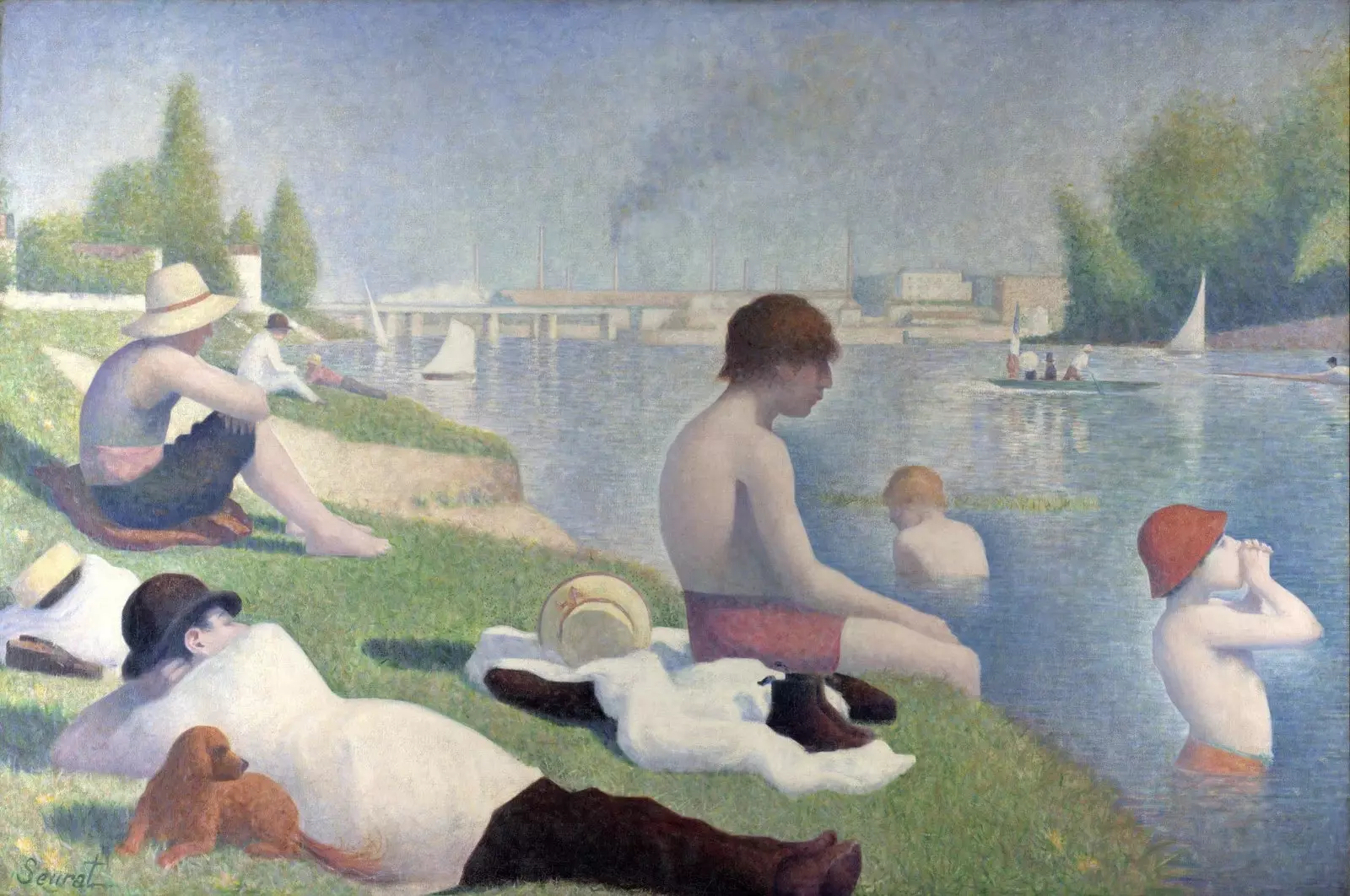
'A Bath at Asnière', by Georges Seurat (1884). National Gallery (London).
Monet needed to paint more than Thirty times the facade of Rouen Cathedral to show us that the only permanent thing is change. For Seurat, on the other hand, a single painting was enough to capture some immutable things. Things that were present in his time as in all times to this day.
Paris, 1884. in full Elysian Fields is celebrated the first edition of the Hall of Independents , whose purpose is encourage artists to express themselves freely instead of pleasing juries and fighting over financial prizes.
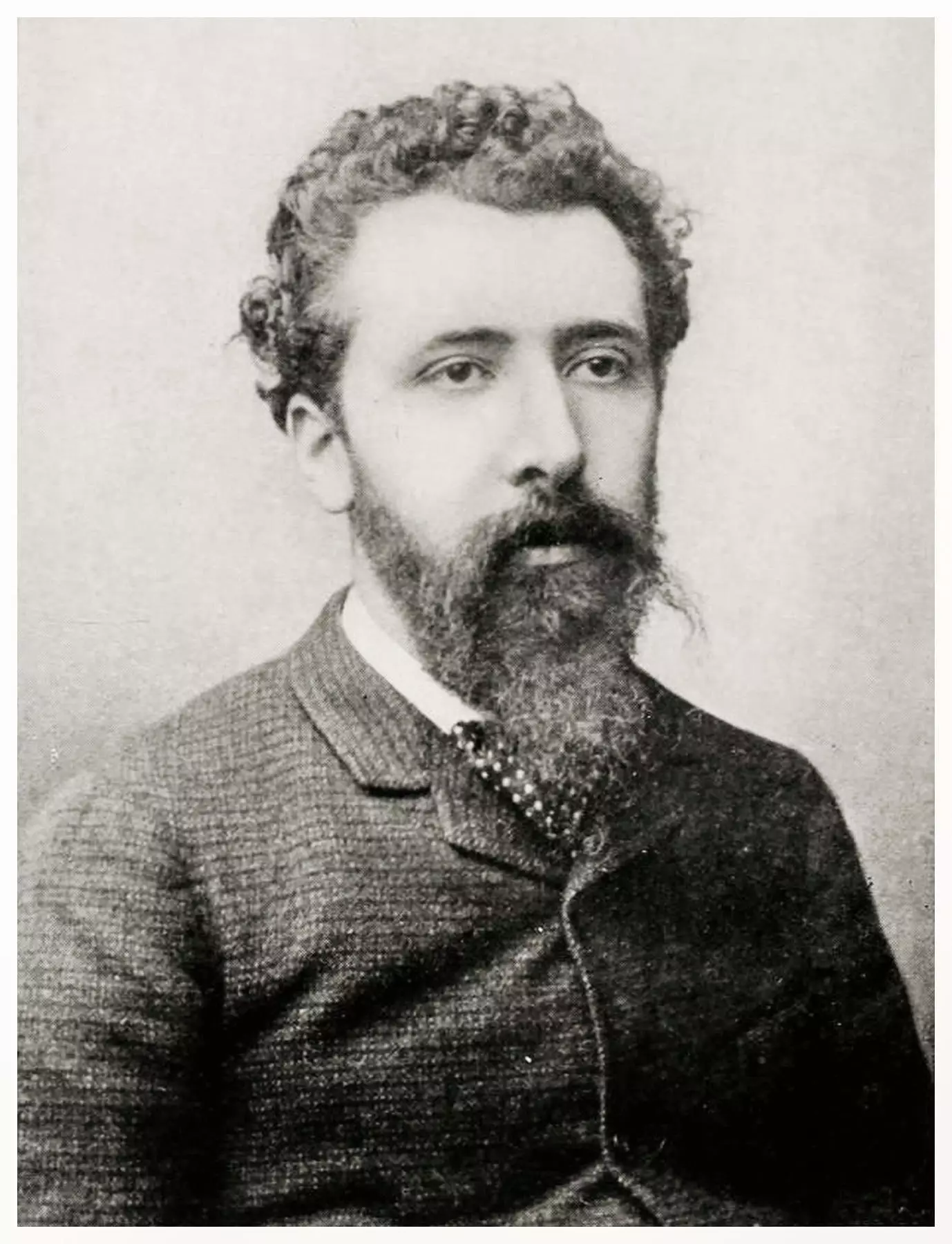
Georges Seurat (1859-1891)
Through the corridors of the pavilion he walks a bony man with a goatee goatee and a stern look, who looks up and down at the paintings as they come his way. Although he doesn't express it, for sure the level seems more than acceptable: Redon, Cross, Dubois-Pillet... There is even 400 jobs, so many fan them out of the corner of their eye.
Suddenly he stops short and frowns. Anyone would think that he has just seen something that deeply displeases him, and yet it is quite the opposite.
He has assailed the certainty of to have before him something new and unexpected, and this has happened with a canvas of two by three meters representing a group of workers sunbathing and bathing in the Seine.
Our man was the young art critic Félix Fénéon, and he had a reputation for being two things: a anarchist recalcitrant and defender until the death of "his" artists of him.
As far as the first is concerned, he would end up in prison accused of participating in an attack , and in the trial he defended himself by stating: "The only bombs he dropped are literary." As for the latter, he tirelessly scrutinized the hunt for new values, without paying attention to fashions or conventions, and when he found the vein he extracted pure gold from it.
That year the vein was called A bath in Asnières , and it was the work of a semi-unknown named Georges Seurat (1859-1891), that he had not fulfilled not even 25 years and he was already making amends for the Impressionists.
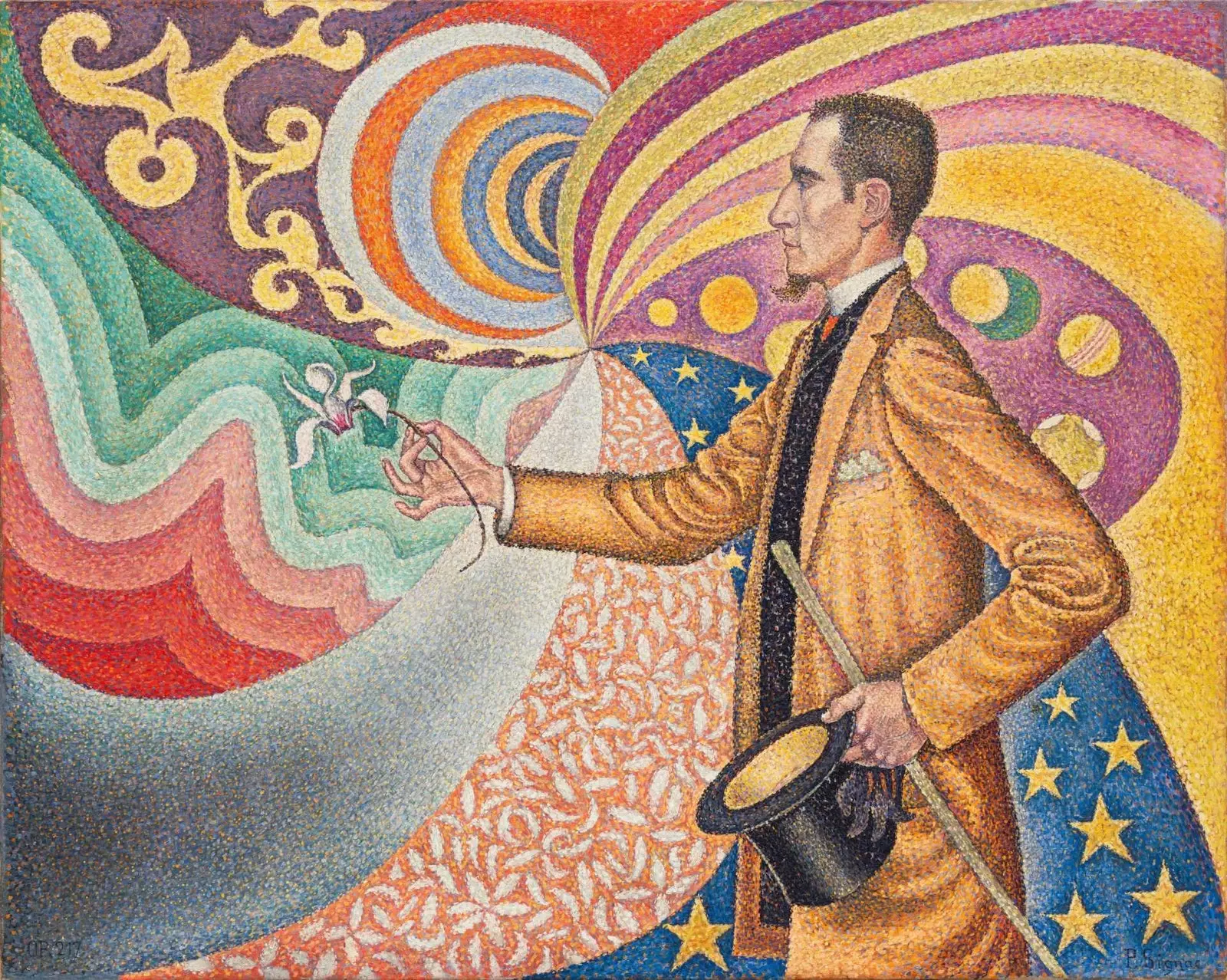
'Portrait of Félix Fénéon', drawn by the pointillist Signac in 1890
Do not think that the painting and its author were liked by many people apart from Fénéon. “It is a false Puvis de Chavannes”, rated a critic. **“Bad from any point of view, including yours”, **said another.
And since we were talking about the impressionists they were especially hostile with the young man: Degas would refer to him as "the notary" With all the intention and contempt in the world.
Well, if that notary was going to attest to something, it was the demise of Impressionism, which, as precursor of the coming avant-gardes had fulfilled its mission -thank you very much, impressionism- , but judging by the results of him ** he had already been showing signs of tiredness for some time. **
That 1884 was also, by the way, the year in which it was held the last impressionist exhibition. Unequivocal sign that it was time to move on to something else.
That "something else" were, obviously, the post-impressionists: Cézanne, Van Gogh and Gauguin they were about to break out as the visionary artists we know today.
But Seurat was perhaps the most radical of them all in developing a new way of representing reality, and perhaps also to conceive it. criticism, not without pejorative intent, He baptized that invention as “pointillism”.
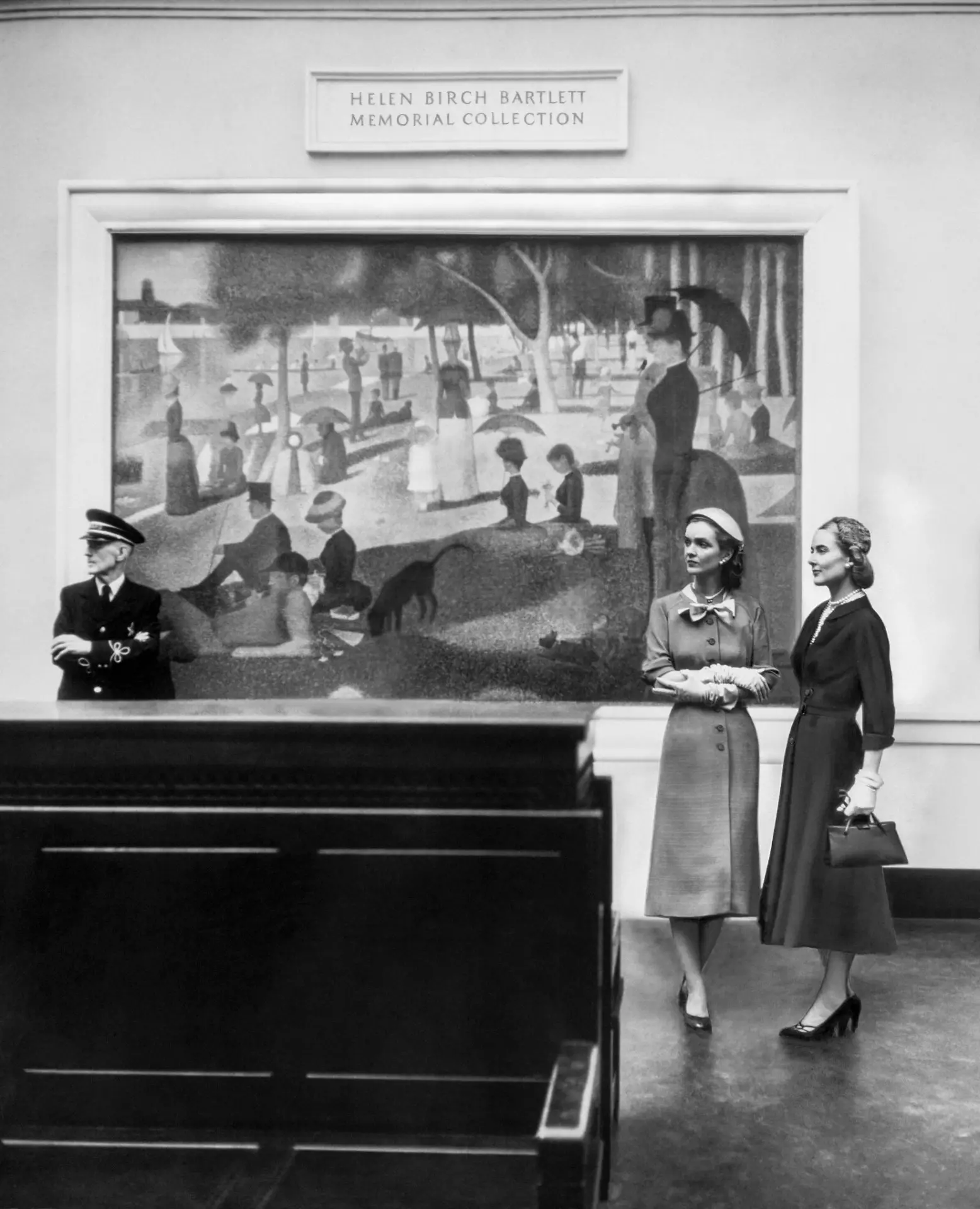
Two women pose in front of a work by Seurat in 1952
seurat I had the idea, somewhat naive if you will, that it is possible create a work of art following scientific precepts more rigorous. So he thoroughly studied the color theories of the chemist Michel-Eugène Chevreul, who had previously inspired Delacroix , among others, and that were based on **the law of simultaneous contrast. **
He says such a law that, when different colors are juxtaposed, the effect will be different depending on the relationship between their tones and luminosities. Actually, art had been intuitively putting this principle into practice for centuries, but it was Seurat who systematized it.
His color combinations were not made on a palette to later transfer to the canvas, but it was the eye of the beholder that did that job by registering the innumerable dots that make up the image.
If the impressionists were looking for capture a moment something mutable and ethereal, Seurat's claim was the opposite, as can be seen here. These shapes are so volumetric and forceful **that almost look like sculptures. **
And yet closely watched, we check how disintegrate at all those points, just as in the real world bodies are made up of imperceptible atoms.
There is thus no spirituality, no metaphysical rhetoric in the author of A bath in Asnières, what would it be a dialectical materialist with a brush. But that is not the only disruptive element that his art offers us.
peek out from behind the chimneys that expel a gray and factory smoke, and with this we are placed in the economic, social and political framework that defines the time of the Industrial Revolution.
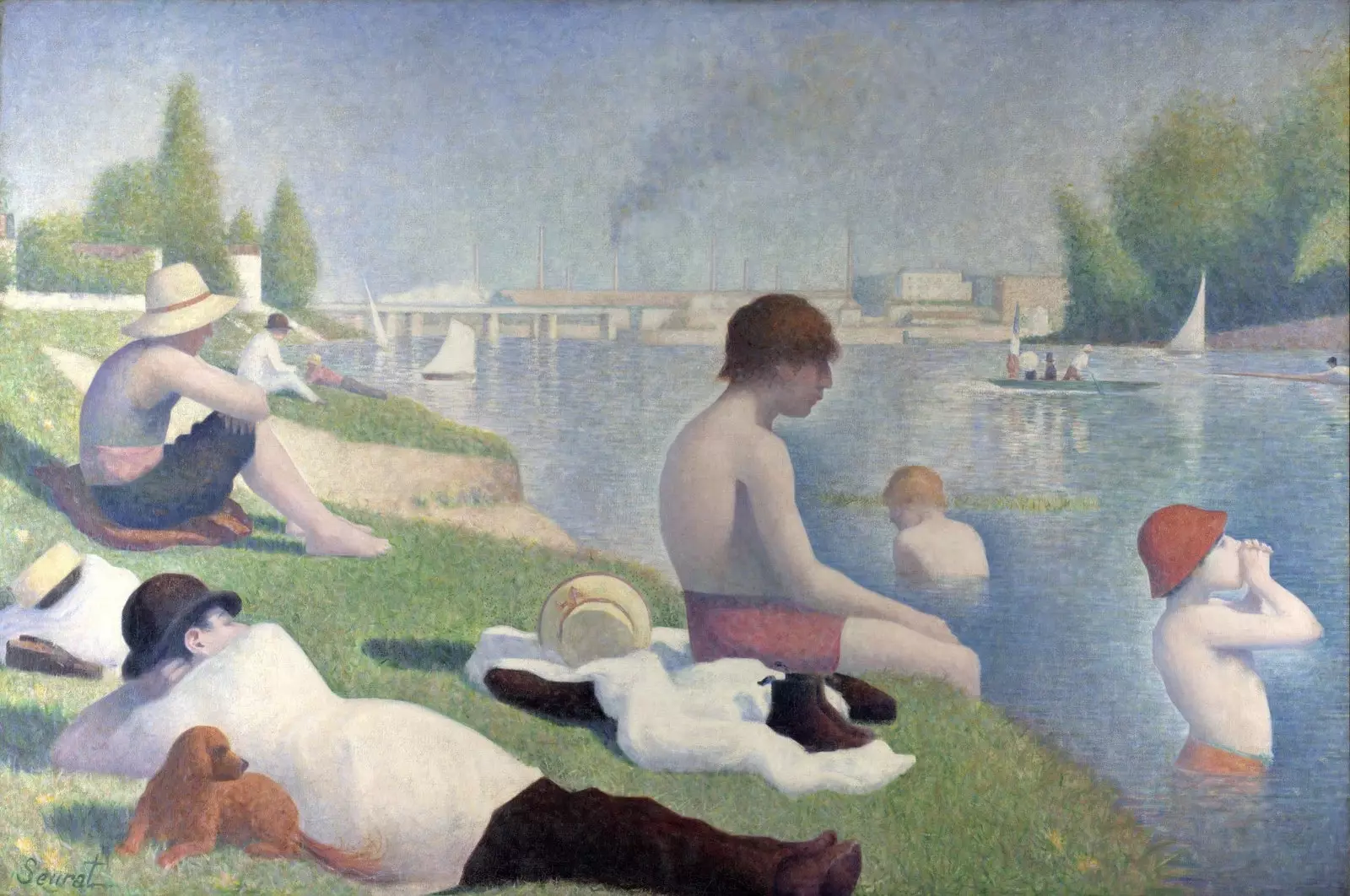
Seurat slides a full-fledged political manifesto
Like all eras, this one had its winners and losers, their powerful and their subjugated. No one will miss that the protagonists of this painting are the seconds, although they are painted with the greatness of the first.
Indeed, the painting has the large format that was generally reserved for characters of lineage and marked historical milestones.
But here we find none of this, but working class youth how they report their simple clothes, their modest hats and its non-bourgeois nonchalance. We are facing what, always with a hint of classism, **we usually call “Sunday people”. **
Some Sundays to whom Seurat offers a treatment full of dignity and affection, without a trace of paternalism, and also without the idealization something prudish that served us **Renoir in their snacks of boaters. **
Perhaps this was something that was overlooked by many of his contemporaries, but surely that was not the case with Felix Feneon , the anarchist critic, who must have appreciated the work not only for its innovative formal qualities. **
So, under the guise of a nice country scene -which is also very nice and very rural, by the way- Seurat slides a full-fledged political manifesto.
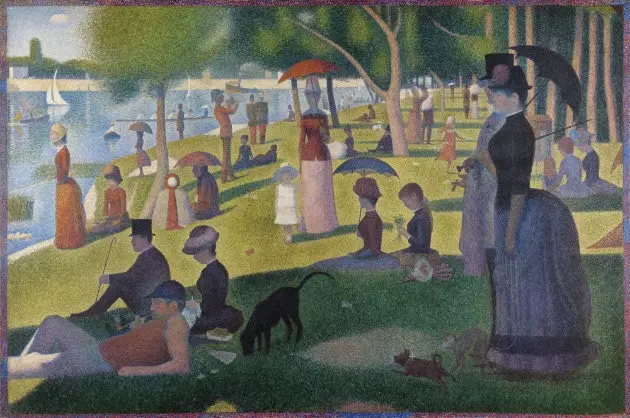
When thousands of points make a Sunday afternoon on the island of Grande Jatte
He appreciated her so much that, years after the painter's untimely death, he decided to acquire it for his own collection. Seurat was active as an artist for less than a decade, yet his influence was enormous.
Today we continue to appreciate this painting, as we appreciate Sunday afternoon on the island of La Grande Jatte, The models and The circus. another pointillist, Paul Signac, followed the formal and scientific investigations of him and he took it upon himself to prolong the reach of his style.
But beyond this, the ramifications of it are endless. We can guess that Without Seurat, Mondrian, and Futurism, and Constructivism, and Josef Albers, and Vasarely, and Bridget Riley, and Jesús Soto, and Carlos Cruz-Díez, would be unthinkable. and all those who after him have investigated the subtleties of our perception of colors and shapes.
To all this, Aren't you dying for an open-air bath?
